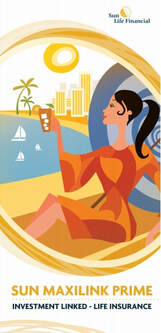|
PERSONAL FINANCE PLANNING
Personal finance planning is the management of money and other financial resources that an individual or a family unit performs to earn, save, invest and spend such resources over a span of time. Personal finance plans should ideally consist of short, medium and long term money goals. The plans should consider the risks of different financial instruments and match these with a specific goal.
Many Filipino individuals and families often go through their everyday lives without even having made an attempt to craft a personal finance plan. This typically goes on for years and even decades. The lack of a personal finance plan leads to an inability to discern the "big picture" of whether available money resources are enough to meet urgent financial requirements. Furthermore, this situation is often compounded by unsound financial behavior such as splurging on the latest gadgets, or spending lavishly for birthday celebrations or fiestas, whenever there is money that suddenly becomes available. This behavior is done oblivious to possible realities that may limit a person's ability to meet important needs.
This unfortunate situation leads to the "perfect storm" of
This self-perpetuating situation invariably lead a lot of Filipinos into the waiting jaws of poverty. To avoid this, this simple personal finance plan is recommended to be implemented as early as possible. Remember that in personal financial planning, TIME can be used as an ally. The earlier the plan is executed, the greater the chance of avoiding the poverty trap down the line. Of course conversely, the later the plan is implemented, the higher the likelihood of falling into hard times down the line. Here are the steps to a simple personal finance plan: (1.) Set aside a fixed percentage of your monthly income as savings. Tools: Regular Savings Account or Time Deposit Account A good percentage is 20% of your monthly income. As soon as your paycheck arrives, automatically set aside 20% of the amount and deposit it in a bank account with a passbook. Make sure the account has no ATM so you won't be tempted to withdraw the funds anytime to spend it on short-term wants. Simultaneous with this, try to adjust your lifestyle so that you don't spend too much of the remaining 80% of your paycheck on non-essential expenses such as designer coffee or expensive restaurants. The goal is to eventually increase your savings level to 30% or even 40%. Start with an amount that you’re comfortable with and work your way upwards. Once you have committed to this habit, achieving your goal will become so much easier. (2.) Build your Emergency Fund. Tools: Regular Savings Account, Time Deposit Account, Health Insurance, Regular Pay Life Insurance, Non-Life Insurance From the 20% you save each month, you need to channel some of it to an emergency fund. An emergency fund ensures that you have readily spendable cash should an emergency present itself. Examples of emergencies include:
Due to the variety of possible emergencies, the emergency fund should also be multi-faceted. This fund should ideally consist of the following:
This emergency fund must be replaced once it has been used and depleted. (3.) Stick to your monthly spending budget It is very important to religiously adhere to your set spending plan to ensure that you keep tabs on where your money is going. We ought to be spending on the things that we need and make us happy while at the same time cutting back drastically on the things that we do not value as much. A recommended percentage is as follows:
Apply the conscious spending plan, adjust based on your lifestyle and needs, but make sure to stick to the monthly spending budget. Remember, the secret to saving is really NOT how much you MAKE but how much you KEEP! (4.) Invest for your Dreams and Goals Tools: Mutual Funds, Single Pay Life Insurance, Regular Pay Life Insurance, UITFs, Stocks, Bonds The most common dreams and goals in a person's life include:
Typical life milestones include:
The trick to saving for life milestones is to visualize your goal, pin your target amount and set a deadline to achieving it. Most importantly, is to INVEST so that your money will work hard for you by creating more money. This is more extensively discussed in our Investment Planning page. |
"Someone is sitting in the shade today because someone planted a tree a long time ago" Get a
Sun Maxilink Prime VUL NOW! Protection for your family while growing your money through investments. Payable for at least 10 years. Learn more HERE! I want to make a difference. I want to Be A Sun Life Financial Advisor
YOUR PARTNER :
Edwin T. Bartolome
Financial Advisor and Certified Investment Solicitor Authorized by the Insurance Commission to act as an Insurance Agent. For inquiries and free assistance on Personal Finance, Investments, Estate Planning and other Money Matters, you can reach him at: Office Address:
Baobab New Business Office Sun Life Financial 6/F BTTC Centre, 288 Ortigas Avenue Greenhills, San Juan City Philippines Tel. No. 7-719-3958 Fax. No.7-719-3894 Financial Planning Articles:
Why You Need To Maintain Both A Savings Account and an Investing Account Why Filipinos Should Invest and Not Merely Save Getting Rich Is Like Running A Marathon, Not A Sprint Delay Your Gratification To Succeed Financially |





